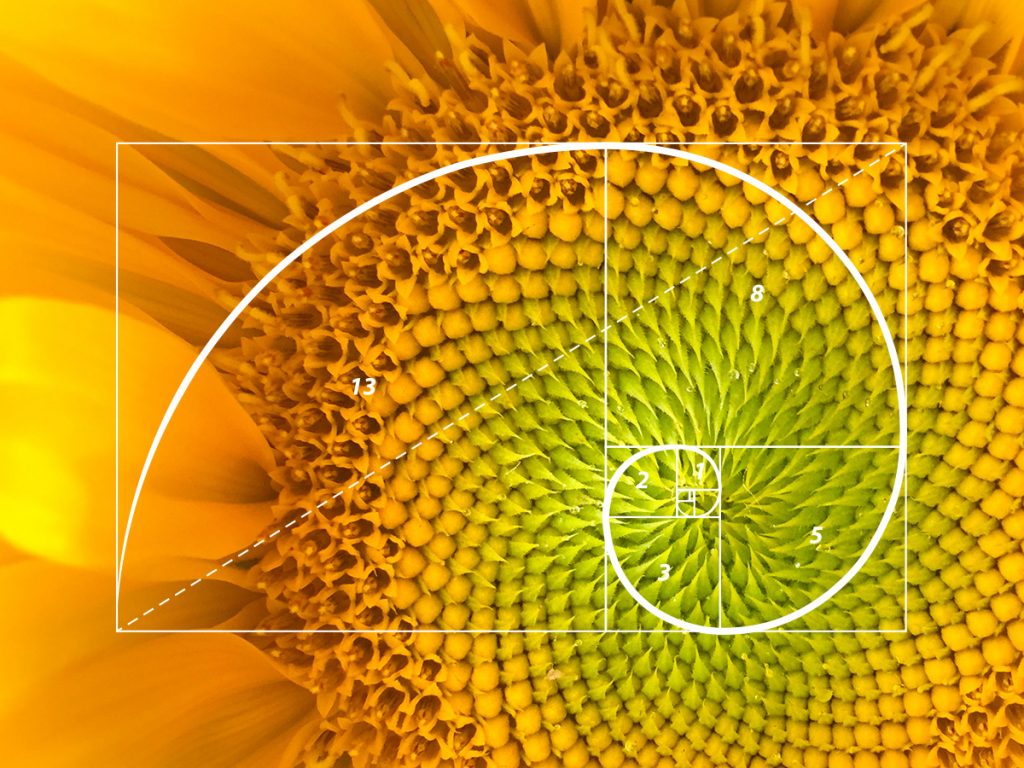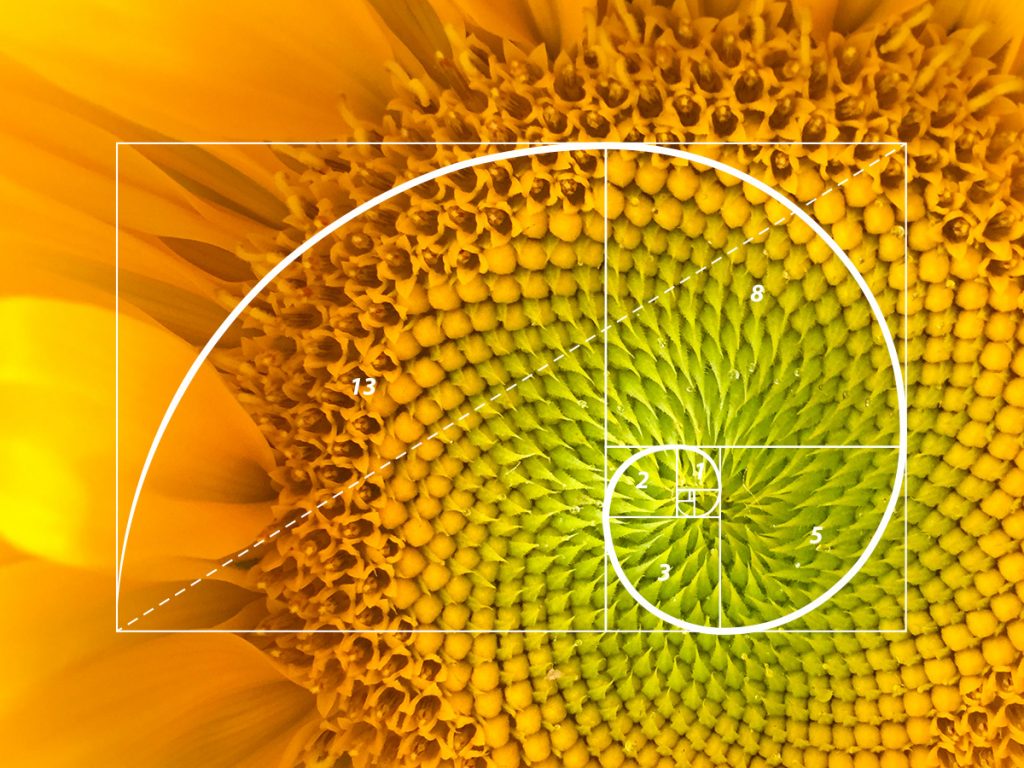
The Fibonacci Sequence is a series of numbers with a simple pattern:
0, 1, 1, 2, 3, 5, 8, 13, 21, 34, …
Each number in the sequence is found by adding the two numbers immediately before it. For example:
- The number 2 is found by adding 1 and 1 (1 + 1).
- The number 3 is found by adding 1 and 2 (1 + 2).
- The number 5 is found by adding 2 and 3 (2 + 3).
- And so on!
For instance, the next number in the sequence after 34 is found by adding 21 and 34, which equals 55.
Here’s a longer list of Fibonacci numbers:
0, 1, 1, 2, 3, 5, 8, 13, 21, 34, 55, 89, 144, 233, 377, 610, 987, 1597, 2584, 4181, 6765, 10946, 17711, 28657, 46368, 75025, 121393, 196418, 317811, 514229, …
You can continue the sequence by adding the two previous numbers together to find the next ones. For example, the number after 514229 can be calculated by adding 317811 and 514229.
Makes A Spiral
When we make squares with those widths, we get a nice spiral:
Do you see how the squares fit neatly together?
For example 5 and 8 make 13, 8 and 13 make 21, and so on.

This spiral is found in nature!
The Rule
The Fibonacci Sequence can be expressed using a rule, where the terms are numbered starting from 0 onwards, as follows:
n = 0 1 2 3 4 5 6 7 8 9 10 11 12 13 14 …
xn = 0 1 1 2 3 5 8 13 21 34 55 89 144 233 377 …
Each term is denoted as xn, where n represents its position in the sequence. For instance, the 8th term is x8, which is found by adding the 7th term (x7) to the 6th term (x6):
x8 = x7 + x6
In a generalized rule, we can express the relationship as:
xn = xn−1 + xn−2
Here, xn represents the term number “n,” xn−1 is the previous term (n−1), and xn−2 is the term before that (n−2). This rule succinctly defines how each term in the Fibonacci Sequence is derived from the two preceding terms.


